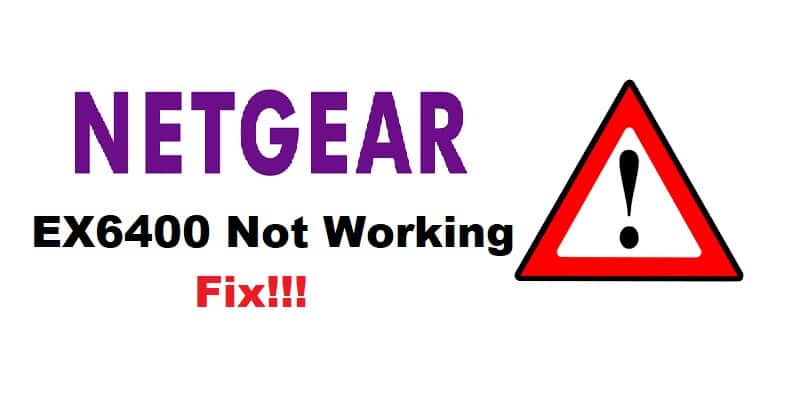
When your devices keep connecting and disconnecting from your router or extender, it can be quite frustrating. Though these device connection issues may appear to be normal for a broadband user, overcoming these errors can be difficult at times.
Having said that, the NETGEAR EX6400, a Wi-Fi extender, has gained attention due to user dissatisfaction with the NETGEAR EX6400 not working complaint. Because this is a common problem among NETGEAR users, we will provide a general troubleshooting guide in this article.
Netgear EX6400 Not Working Fix:
- SSID Configuration:
Your extender network requires a username and password to connect your devices to the extender. If you are having connection problems, or if your extender network is recognized by your clients but they are unable to connect to it, there may be an SSID configuration issue.
To begin, ensure that the SSIDs of the router and extender are not identical. If you use the same SSID, your clients may be connected to the router even if your extender provides an improved connection. Make certain that the SSIDs of your router and extender are distinct. Another thing to consider is the SSID configuration of the extender. If you continue to use the network credentials provided by NETGEAR, your network may be compromised and vulnerable to security risks. This is because your neighbors can easily access your extender network and connect their clients to it, lowering the performance of your network. Furthermore, if your network is not configured timely outsiders may gain access to it or change its configuration, denying you access. Therefore, the first thing you should do is change the SSID and password of your NETGEAR extender.
- Location Of Your Extender:
The placement of your extender has a significant impact on its performance. Because an extender is designed to be connected to a router, one reason it is not working is that it is too far away from your router. It will make it difficult for the extender to pick up your router’s signals. Make certain that both devices are in the same room. Avoid putting the extender too close to the router because both signals can interfere, causing a service disruption.
Furthermore, ensure that your extender is not placed in a suffocated area or near devices that emit radiation, such as small Bluetooth devices, microwaves, washing machines, and so on. If your router and extender are in areas with large structures, move them to a more open area where the signals can easily transmit to one another.
- Improper Connection to the Router.
Another reason your extender is not sending signals is that it is not properly connected to the router. A faulty or incompatible cable can cause network signal disruption. Check that the Ethernet cable is in good working order and is securely connected. Ascertain that the cable is connected to the appropriate router port so that the router LED lights up green, indicating that the extender recognizes the connection. You can test the problem by disconnecting and reconnecting the cable.